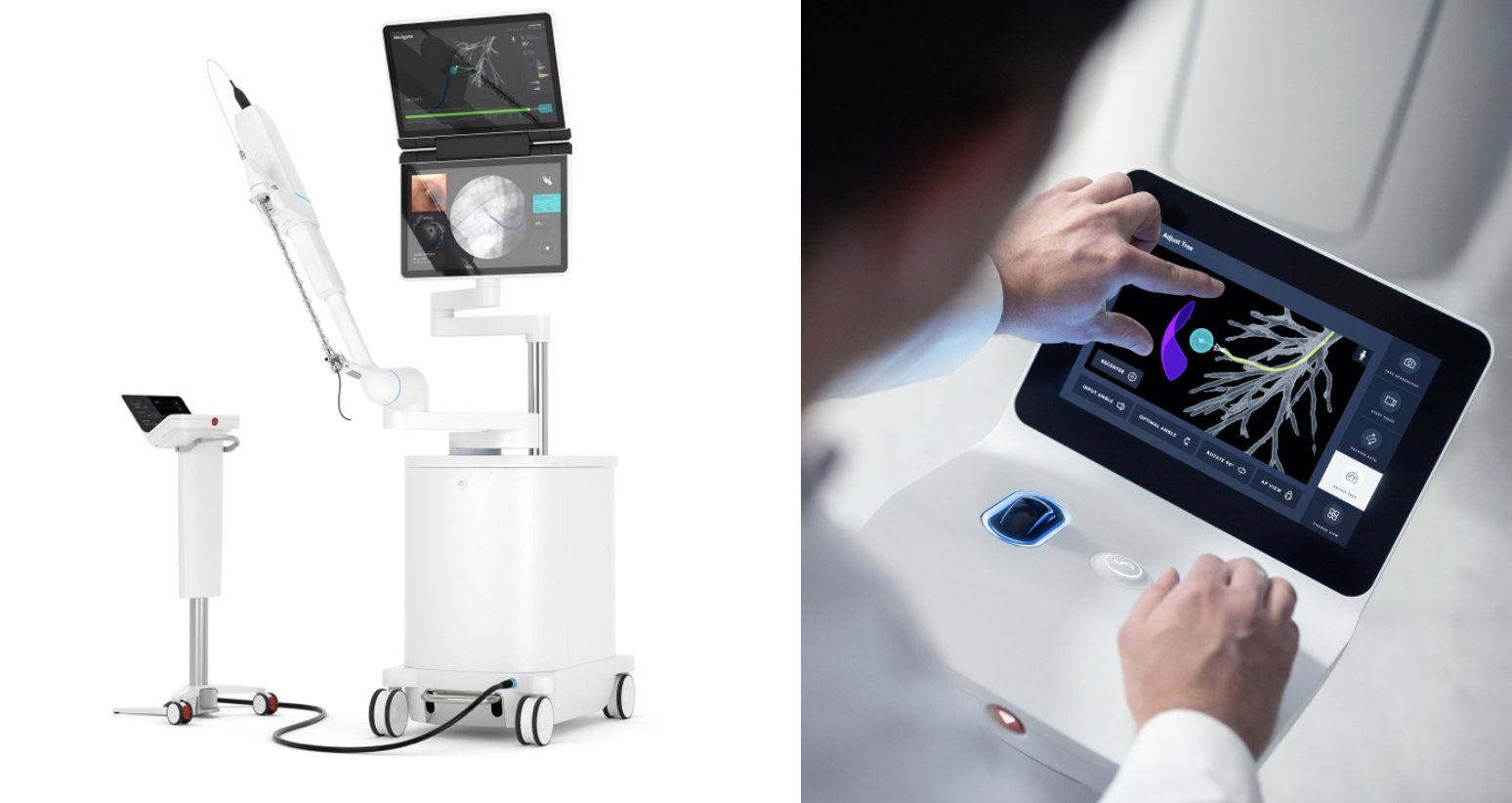Unlike conventional flexible bronchoscopy, where a proceduralist operates the scope with his hands, robotic assisted bronchoscopy allows physicians to operate a thin and ultra maneuverable flexible catheter using a controller. This catheter is smaller than a standard flexible bronchoscope, and its extraordinary flexibility and stability allows the bronchoscopist to reach parts of the lung that may have been challenging to access with traditional or even advanced bronchoscopic techniques. Much like during navigational bronchoscopy, the computer creates a virtual map using patients latest CT chest. This map is then used to plan the best route to the lesion.

(Left): the Robotic System; (Right). Console that controls the movement of the robotic catheter and is operated remotely by the proceduralist

Robotic catheter demonstrating superb flexibility and stability. The catheter is capable of articulating 180 degrees allowing proceduralist to reach areas of the lung previously inaccessible to biopsy.
Here at Weill Cornell Medicine | NewYork-Presbyterian physicians use robotic assisted bronchoscopy, which differs from navigational bronchoscopy in several important ways. Unlike navigational bronchoscopy that uses electromagnetic technology, the robot uses shape sensing technology, during which a fiberoptic shape sensor measures the full shape of the catheter hundreds of times per second, providing real-time precise location and shape information throughout entire process. This technology, along with improved flexibility and stability of the robotic catheter, increases diagnostic capabilities and enables a more precise biopsy compared to previous navigational bronchoscopy platforms.
“We believe this technology will improve our precision when performing a biopsy, allowing us to reach smaller nodules with greater confidence and diagnose lung cancer early” says Dr. Eugene Shostak, Interventional Pulmonologist and Assistant Professor of Medicine in Cardiothoracic Surgery.
Potential Benefits of Using Robotic Assisted Bronchoscopy Include:
Increased Diagnostic Accuracy In Performing Lung Biopsy
Several studies examining the performance of robotic assisted bronchoscopy have concluded that diagnostic yields of a lung biopsy are higher compared with other types of bronchoscopic technologies.
Early Diagnosis of Lung Cancer
Early detection of lung cancer is the key to survival. By diagnosing small nodules that were previously considered inaccessible, the robotic bronchoscopy technology allows lung cancer to be diagnosed earlier and for treatment to begin sooner. This results in improved outcomes and survival rates.
Reduced Procedural Risk
Clinical studies have demonstrated excellent safety profile of robotic assisted bronchoscopy. Unlike CT guided lung biopsy, where a needle enters the lung from outside and is therefore associated with significant risk of collapsing the lung, which can require hospitalization for some patients, robotic bronchoscopy enters the lung using natural passages and therefore the risk of lung collapse is extremely small, even in patients with significant emphysema.



